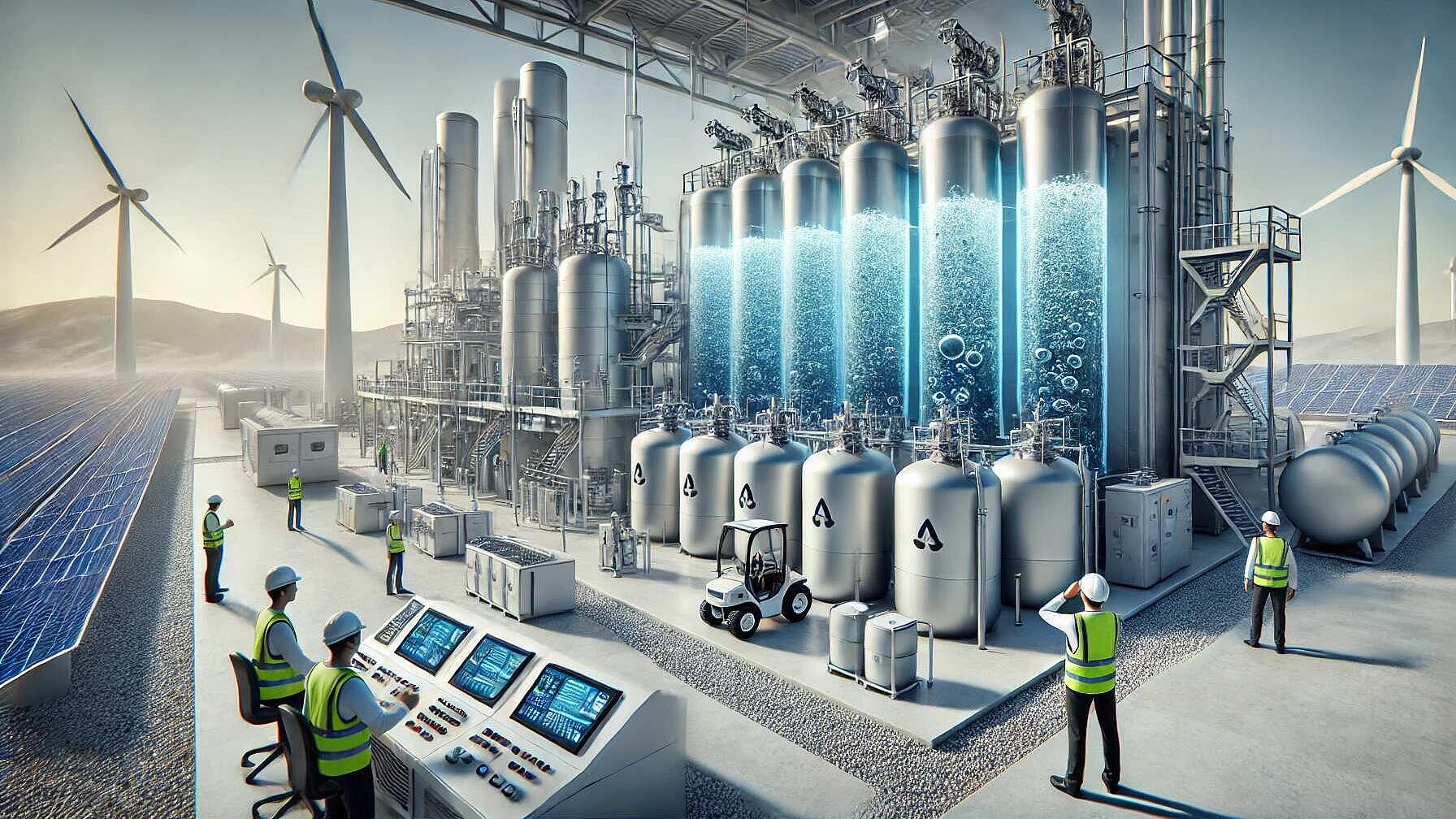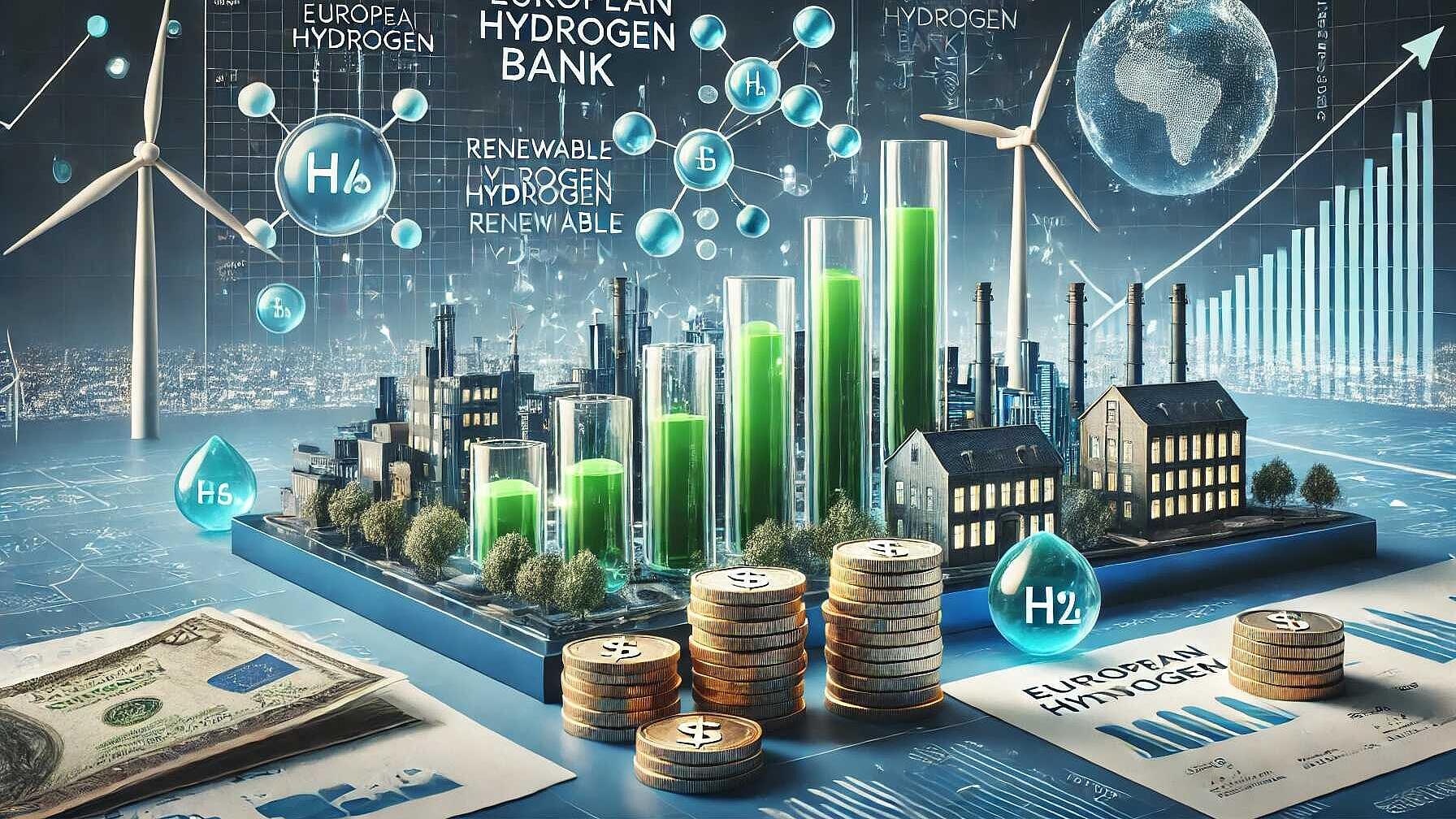 Renewable Energy
Renewable EnergyHydrogen's Role in the Future of Clean Energy: Innovations and Opportunities
Resumo
The article discusses the pivotal role of hydrogen in global clean energy initiatives, emphasizing its importance in decarbonizing sectors where alternative clean technologies are less feasible. Despite a 2.5% increase in demand, largely for traditional uses, low-emissions hydrogen production remained under 1 million tonnes in 2023. However, projections show significant growth in this area, driven by investment and technological advancements in electrolysis.
China is leading the growth in electrolysis capacity, contributing significantly to reduced costs and technological deployment. India and Europe are also noteworthy participants in the burgeoning electrolysis market, with Europe seeing a fourfold increase in FIDs for electrolyzers. These developments are aligned with the broader momentum in using hydrogen for a clean energy transition, but are challenged by financing, regulatory, and infrastructural barriers.
Hydrogen has versatile applications, including as a direct replacement for fossil fuels in industrial processes and in producing low-carbon steel through DRI processes. Emphasis is placed on the need for infrastructure, like hydrogen hubs, to scale up production. Innovations like the EU’s STORMING project suggest promising advancements in hydrogen production by converting methane into hydrogen while producing valuable materials, with potential implications for the circular economy.
By 2030, low-emissions hydrogen production needs to significantly increase, aligning with the IEA's Net Zero by 2050 scenario. The sector offers opportunities for students and professionals, particularly in technology, engineering, and policy. For continued growth, governments must implement stronger demand-side policies and foster public-private partnerships to support infrastructure development and market expansion.
In conclusion, hydrogen is positioned to be a key component of a sustainable energy future, provided that production scales up, costs decrease, and market demand grows. With ongoing innovation and supportive policies, hydrogen can serve as a major element of the clean energy revolution.
Artigo aberto completo
Hydrogen's Role in the Future of Clean Energy: Innovations and Opportunities
Current Landscape
Hydrogen is at the forefront of global clean energy initiatives, particularly for its potential in hard-to-decarbonize sectors such as heavy industry, shipping, and aviation. As the 2024 *Global Hydrogen Review* by the International Energy Agency (IEA) indicates, global hydrogen demand reached 97 million tonnes (Mt) in 2023, representing a 2.5% increase compared to 2022. However, much of this demand remains tied to traditional uses like refining and chemical manufacturing. The challenge now lies in transitioning this demand from unabated fossil fuel-based hydrogen to low-emissions alternatives, a shift critical to addressing global climate goals.
The urgency to expand low-emissions hydrogen production stems from its potential to reduce greenhouse gas emissions. Hydrogen can significantly contribute to global decarbonization, but the current landscape remains limited. Low-emissions hydrogen made up less than 1 Mt of production in 2023. This is poised to change, with projections estimating growth to 49 Mt per annum by 2030, driven by a wave of investment and technological advancements, particularly in electrolysis.
Innovations and Opportunities
The past few years have seen substantial strides in hydrogen technology, especially in the development of electrolysis for producing hydrogen using renewable energy. Electrolysis projects now make up nearly 520 GW of announced capacity, with China leading the way, accounting for over 40% of global final investment decisions (FID) for electrolyzers. As the global leader in manufacturing clean energy technologies, China’s mass production capacity has begun to drive down costs, echoing its success in solar PV and battery technologies.
Electrolyzers are vital to producing low-emissions hydrogen, especially from renewable energy sources, as they enable the decarbonization of sectors where other clean technologies are difficult to implement. Countries like India are also emerging players in this domain, with notable investment in large-scale electrolysis projects. In Europe, FIDs quadrupled to over 2 GW in the last year alone, showcasing the global momentum behind hydrogen as a key player in clean energy transitions.
Yet, despite this progress, the journey towards a hydrogen economy faces significant obstacles. Key among them are financing hurdles, regulatory uncertainties, and infrastructure challenges. These issues are delaying project implementation and threaten the viability of many planned ventures. The demand side also requires more robust government policies and market incentives to create the necessary conditions for hydrogen to thrive as a mainstream energy source.
The Role of Hydrogen in the Energy Transition
Hydrogen’s potential is multifaceted. It can serve as a direct replacement for fossil fuels in industrial processes, power generation, and transportation. Particularly promising is its use in sectors like steel production, where hydrogen can be used to produce low-carbon steel via direct reduced iron (DRI) processes. Similarly, hydrogen-based fuels are expected to play an integral role in decarbonizing maritime shipping and long-distance aviation, where electric alternatives are less feasible due to range and energy density limitations.
However, realizing hydrogen's full potential requires significant infrastructure development. Hydrogen hubs—areas where production, demand, and infrastructure are concentrated—can play a key role in scaling up production and reducing costs. These hubs can link industries like refining and chemicals, which are already major hydrogen consumers, to the production of low-emissions hydrogen, thereby fostering demand in sectors that are easier to decarbonize.
In terms of innovation, the European Union’s STORMING project represents a breakthrough in hydrogen production by developing reactors that use renewable electricity to convert methane into CO2-free hydrogen and valuable carbon nanomaterials. This technology promises not only to address the challenges of hydrogen production costs but also to contribute to circular economy principles by creating high-value materials from industrial by-products, which could revolutionize industries like battery manufacturing.
Impact on the Future
The next decade will be crucial for hydrogen's role in the energy transition. By 2030, low-emissions hydrogen must become a significant player in the global energy mix if we are to meet the climate targets laid out in the Paris Agreement. The IEA’s *Net Zero by 2050* scenario forecasts that global hydrogen demand must grow to 150 Mt, with low-emissions hydrogen contributing around 45% of that demand. This means a massive scale-up of production capabilities, infrastructure development, and, importantly, policy alignment.
Opportunities abound for students and young professionals entering the energy, industry, and technology sectors. As hydrogen’s market continues to expand, new research avenues and entrepreneurial ventures will emerge, particularly in hydrogen production technologies, infrastructure, and the development of hydrogen-based products. The growing demand for engineers, researchers, and policymakers skilled in hydrogen technologies offers a fertile ground for the next generation to contribute to the clean energy revolution.
Call to Action
For students and young professionals inspired by the transformative potential of hydrogen, now is the time to get involved. Whether through pursuing advanced education in clean energy technologies, engaging in innovative projects like STORMING, or participating in policy debates, the hydrogen sector offers numerous pathways for impactful careers. Moreover, staying informed about emerging technologies and market trends will be crucial as the industry evolves.
Governments, too, must act decisively. Stronger demand-side policies, such as industrial decarbonization mandates and incentives for using hydrogen in shipping and aviation, are needed to ensure market growth. Additionally, fostering public-private partnerships to reduce investment risks and stimulate infrastructure development will be essential for scaling up hydrogen's production and use.
Conclusion
Hydrogen stands at a pivotal moment in the global energy transition. The growth of low-emissions hydrogen production, driven by technological advancements and supportive policies, offers a pathway toward a decarbonized future. However, significant challenges remain, including scaling production, lowering costs, and creating sufficient market demand. With continued innovation, such as the STORMING project’s breakthroughs in reactor technology, hydrogen can become a cornerstone of the clean energy future, offering abundant opportunities for the next generation of energy innovators.



